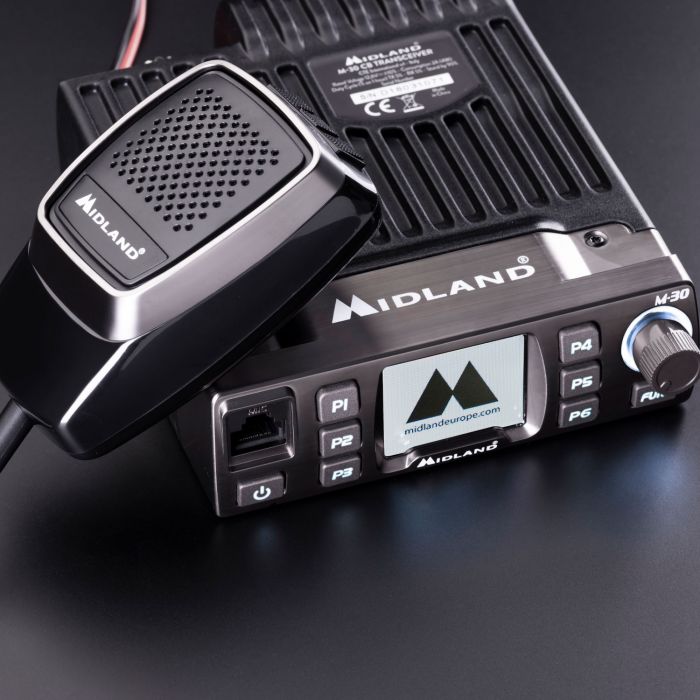
Why Do Truck Drivers Need Radios and How to Choose Them Correctly?

Trucks, which cover vast distances, are not just a means of transporting goods. They are an essential part of modern logistics that require high mobility and reliable communication. This is where radios come into play. Despite the development of mobile communication and internet technologies, radio communication remains relevant and even gains popularity among truck drivers. In this article, we will discuss why truck drivers need radios, the functions they perform, and how to choose the right model for their needs.
The Role of Radios in the Transport Industry
The modern transport market requires truck drivers to have fast and efficient communication with dispatch services, other drivers, and road participants. While mobile communication is convenient and accessible, radios maintain their importance for several reasons.
1. Road Safety
Truck drivers often find themselves in situations where they urgently need information about road conditions, road closures, hazards on the route, or the need to exchange important information with colleagues. Radios provide immediate two-way communication, which is crucial for ensuring safety on the road. In cases where mobile signals may be absent or unreliable, radios allow drivers to stay connected.
2. Convenience and Time Savings
Trucks often travel long distances far from large settlements. In these conditions, a radio is a quick and convenient tool for exchanging information. A driver can obtain information about road conditions, check if delivery conditions have changed, and even learn about the status of the cargo or the health of colleagues. This helps save time and improve logistical efficiency.
3. Availability Over Long Distances
There are many regions where mobile communication may be unstable or non-existent. For example, in mountainous areas or remote parts of the country, mobile networks might not work, while a radio can maintain stable communication over long distances. This is especially important for truck drivers who often travel through sparsely populated territories.
4. Interaction with Other Drivers
A radio allows truck drivers to communicate with each other, coordinate movement in case of traffic jams or adverse weather conditions. This provides the opportunity to receive real-time information from colleagues, such as road situations or locations of control points.
Main Functions of Radios
Truck radios have a wide range of functions that enable efficient interaction with other road participants and ensure driver safety and comfort. Here are some key functions that can be useful:
1. Communication Range
One of the key characteristics of radios is the communication range. In modern radios, the range can vary from a few kilometers to tens or even hundreds of kilometers when using specialized antennas and frequencies. The range selection depends on the specific routes a driver travels and the need for communication over long distances.
2. Frequency Bands
Radios operate in different frequency bands. The most common are CB (Citizens Band) radios that operate on short waves, and professional radios that offer multi-band frequency options. The choice of frequency band depends on communication requirements and the country’s legal norms.
3. Noise Suppression System
Truck radios often use noise suppression systems, which ensure good communication quality even in noisy conditions, such as inside a truck’s cabin. This allows clear voice transmission even at high speeds or in difficult road conditions.
4. Microphone and Speaker
The key components of radios are the microphone and speaker. Many models use specialized microphones with noise suppression to ensure clear voice transmission, even in a noisy cabin. The speaker needs to be powerful enough to ensure the driver can clearly hear the conversation.
5. Additional Features
Some radios come with additional features that make them even more convenient for truck drivers. These can include frequency scanning functions, automatic power adjustment, displays to show communication data, and even the ability to connect to navigation or GPS systems.
How to Choose a Radio for a Truck?
Choosing a radio for a truck depends on several key factors. Here are the main considerations:
1. Radio Type
There are several types of radios on the market, with the most common being:
-
CB Radios (Citizens Band) — These are the most common models for use in transport. They have limited power (up to 4 watts) and don’t require licensing. Such radios are ideal for short- and medium-range communication.
-
Professional Radios — These models typically have higher power and can operate on multiple frequencies. They are suitable for large transport companies or drivers who often travel long distances.
2. Communication Range
The choice of a radio depends on how far you need to communicate. If you primarily travel within a city or short distances, a radio with a range up to 20 km is sufficient. However, if you often make long-distance trips, look for a model with a greater range.
3. Functionality and Additional Features
If you want more communication options, choose radios with additional features, such as the ability to connect external antennas, noise suppression systems, or displays for showing communication data.
4. Price
The price of radios can vary significantly. Basic models with essential functions are available at affordable prices, while professional models with a wide range of features and extended communication range can be much more expensive. Choose a model that fits your budget and needs.
Popular Radio Models
Some of the popular radios for trucks include:
-
Radio station Alan 48 Pro CB Radio (12/24V) — One of the best models for professional use, offering extended communication range and supporting all necessary features for effective operation.
-
CB radio Midland 88 — A budget-friendly CB radio with good communication quality and ease of use.
Radio station MIDLAND CT 590 S — A compact and reliable model that’s ideal for long trips.
Conclusion
A radio is not just a technical gadget but an essential tool for ensuring safety and efficiency for truck drivers. The choice of a radio should depend on the type of route, communication needs, and budget. By considering all these factors, drivers can make the right choice and ensure they have the necessary communication tools for the road.

Leave a Comment